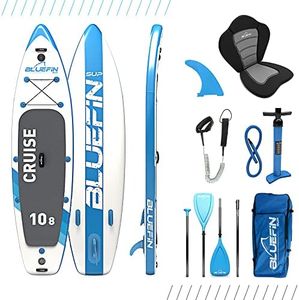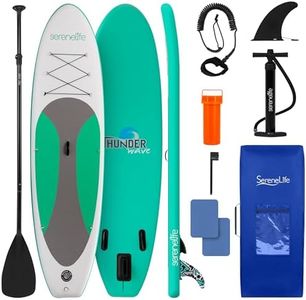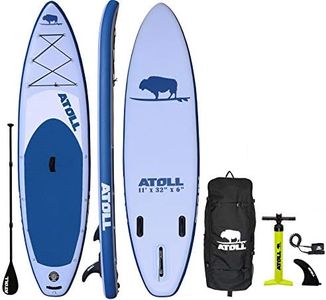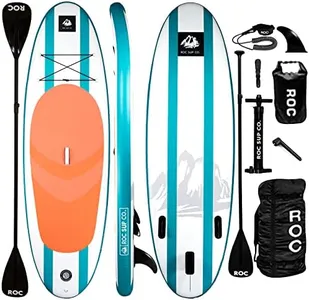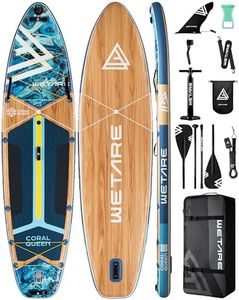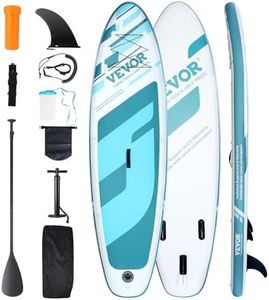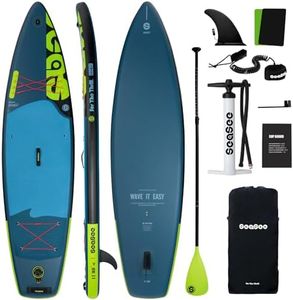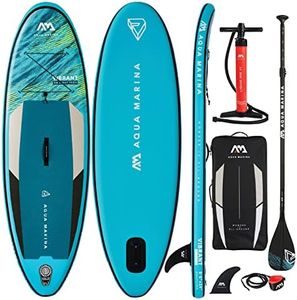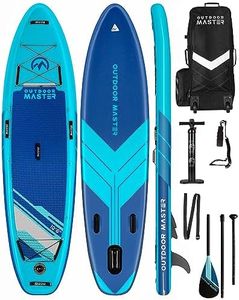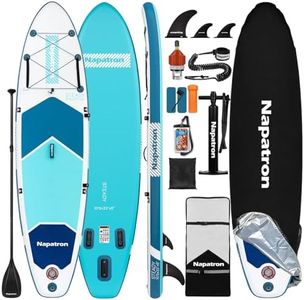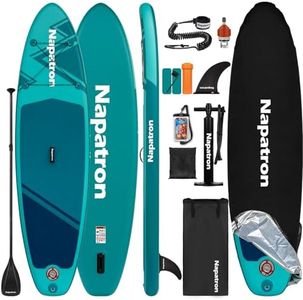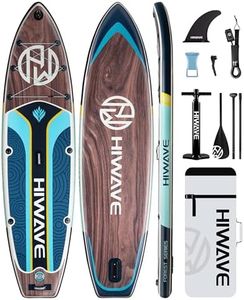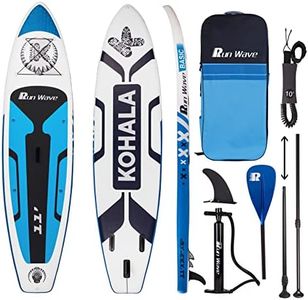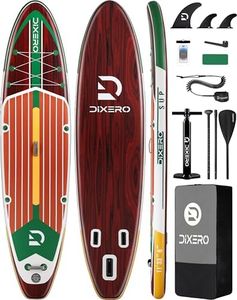We Use CookiesWe use cookies to enhance the security, performance,
functionality and for analytical and promotional activities. By continuing to browse this site you
are agreeing to our privacy policy
10 Best Paddle Board For Adults
From leading brands and best sellers available on the web.By clicking on a link to a third party's website, log data is shared with that third party.
Buying Guide for the Best Paddle Board For Adults
Choosing the right paddle board for adults can make a huge difference in your enjoyment and comfort on the water. The perfect paddle board for you will depend on how you plan to use it, your body type, experience level, and the conditions you expect to paddle in. The primary factors to consider are the board's size, shape, weight capacity, material, and intended use, as each one affects your stability, ease of use, and performance. By understanding these key features, you can confidently narrow down your options and find a paddle board that fits your needs and helps you get the most out of every trip.LengthLength refers to how long the board is from end to end, and it's important because it affects both stability and speed. Shorter boards (typically 9-10 feet) are easier to maneuver and handle, making them good for beginners or those who want to surf waves. Medium-length boards (10-12 feet) are versatile and work well for many paddlers, offering a good balance between speed and stability. Longer boards (12-14 feet) are designed for speed and tracking over longer distances, making them a great choice for touring or racing. Choosing the right length depends on your weight, experience, and how you plan to use the board—beginners and those prioritizing stability often prefer medium-length boards, while experienced users seeking performance might opt for longer ones.
WidthWidth measures how wide the board is at its widest point, directly affecting balance and stability on the water. Narrow boards (about 28-30 inches wide) tend to be faster and track better but require more balance, making them suited for experienced paddlers or racers. Wider boards (32 inches and up) provide excellent stability and are ideal for beginners, larger paddlers, or anyone who wants a more secure feel. If you are new to paddle boarding or plan to take it easy, a wider board is usually best. If you're more advanced or looking to go faster, a narrower board might be right for you.
ThicknessThickness is the measurement of how thick the board is from top to bottom, influencing both buoyancy and rigidity. Thicker boards (usually 5-6 inches) float better and hold more weight, which is great for heavier paddlers or carrying extra gear. Thinner boards (around 4 inches) sit lower in the water and may feel less rigid, which can be fine for lighter paddlers but less ideal for stability. If you’re unsure, opt for a thicker board to maximize support and ease of use.
Weight CapacityWeight capacity tells you the maximum combined weight (including you and any gear) the board can support while maintaining performance. If you exceed this limit, the board may become harder to paddle and feel unstable. Lighter adults can get away with lower capacity boards, but if you’re a heavier adult or plan to bring supplies, a board with a higher weight capacity is essential. Always look for a weight rating that comfortably covers your own weight plus anything you'll carry.
Board Type (Inflatable vs. Solid)There are two main types of paddle boards: inflatable and solid (also called rigid). Inflatable boards are lighter, easier to store, and often more durable against dents and dings, making them great for travel or those with limited storage. Solid boards offer better performance, more speed, and a stable feel, but require more space and care. Your choice depends on how you'll transport and store the board, and whether you care more about convenience or performance on the water.
Intended UseConsider whether you want a board for general paddling, yoga, touring, racing, or surfing. All-around boards work for most activities and offer a good mix of stability and performance. Touring boards are longer and narrower for speed and distance. Yoga boards are very wide and stable for balance. Boards designed for surfing are shorter and more maneuverable. Your main activity should guide your choice, as the shape and features of the board will match best with specific uses.
Fin SetupFins help your board go straight and provide control, with most boards using a single fin, three-fin (thruster), or even multiple small fins (quad). A single large fin is best for flat water and touring, offering simple, stable tracking. A three-fin setup is more versatile and helps with both tracking in flat water and maneuverability in the surf. The right fin setup depends on your primary paddling environment: for calm lakes and rivers, single is fine; for oceans and surf, a multi-fin setup adds versatility.
